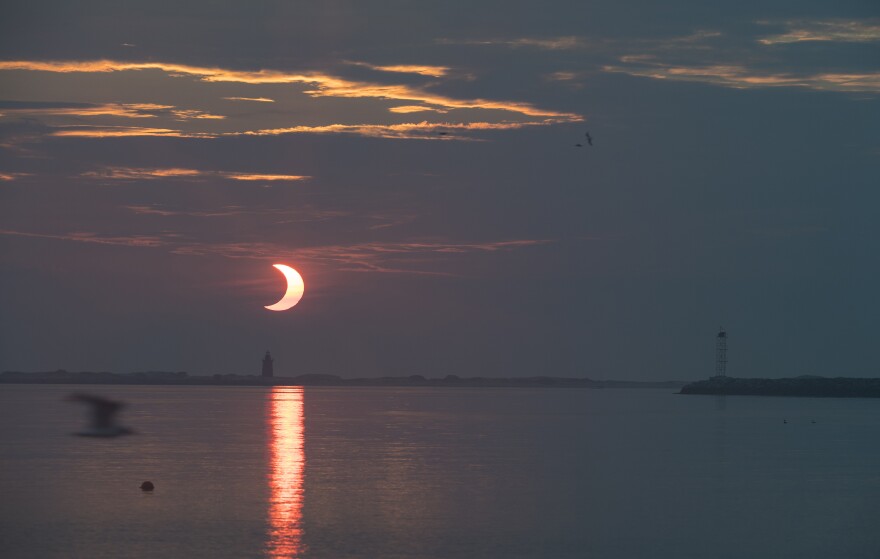If you own a pair of eclipse glasses, you might have a chance to use them on Saturday.
On April 30, a partial solar eclipse will be visible in South America, Antarctica, and the Pacific and Southern oceans, according to NASA.
A solar eclipse happens when the moon passes between the Earth and sun, temporarily blocking the sun's light. During a partial solar eclipse, the moon is not perfectly aligned with the Earth and the sun, so it will not completely cover the sun. Instead, the sun will appear to have a crescent shape, NASA said.
Here's how to see the eclipse and what you might glimpse:
How to see the eclipse
The solar eclipse will mostly be visible in the Southern Hemisphere.
People in "Chile, Argentina, most of Uruguay, western Paraguay, southwestern Bolivia, southeastern Peru, and a small area of southwestern Brazil" will have the best chance of seeing it, according to NASA.
It will first be visible at 2:45 p.m. ET (18:45 coordinated universal time) and reach its peak at 4:42 p.m. ET (20:42 UTC).
To safely view the eclipse, you need a special pair of eclipse viewing glasses or solar viewing glasses. Sunglasses do not count. And never directly look at the sun during an eclipse.
If you don't have the correct glasses, you can create a mini projector to reflect the image of the eclipse onto a flat surface.
The next eclipse that will be visible in North America will be Oct. 14, 2023. That will be an annular eclipse, which happens when the moon nears its farthest distance from Earth and thus does not fully cover the sun. The distance gives the illusion of a "ring of fire" around the moon.
Copyright 2022 NPR. To see more, visit https://www.npr.org.



